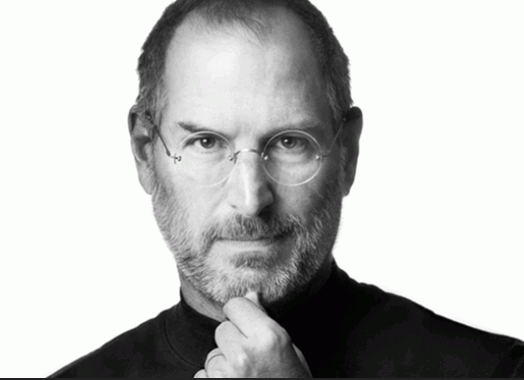“He was brilliant. He had his own style. He had his own approach,” Gates said. “Mine is, I guess…a little geekier than his was”.
While Bill Gates admits to being less cool than Steve Jobs, Jobs made a more profound distinction. He recognized in Bill a “businessman” who “has excelled on the financial side of things.” Steve instead saw things differently, though, saying that for him: “The motivation was in the products, not the profits.”
“My passion has been to build an enduring company where people were motivated to make great products.” This was Job’s creed. His goal was the excellence of a product that would meet the needs of the people, even before they expressed that need; “ Our job is to figure out what they‘re going to want before they do.”
The last few pages of Steve Jobs’ famous biography sum up to perfection his identity and his legacy. Reading and rereading these pages I note the deep affinity between our tiny company, ermesponti, and the giant, Apple: from the mission to create quality products to the lack of interest in profit, combined with an almost Socratic problem-solving attitude towards customer’s needs.
But the thing that strikes me most is the similarity of approach; Jobs called it the ‘end-to-end process’. It was the integrated control of hardware, software and content in a single system that allowed Apple to reach product perfection, intuitive use, beauty of design and, finally, device synchronization.
This is what we have been seeking to do at ermesponti for years, by combining architectural design with good site management and high quality artisanal production and by focusing on the specific needs of the customer and solving their problems in terms of space, time and cost.
It is the economic crisis itself that demands it. The logic of interior design and traditional contract jobs are no longer applicable; there are too many players, over-fragmented processes, unbridgeable gaps between aesthetic, technical and practical demands; long waits, inefficiency, errors and costs that are disproportionate to the results. Excellence and simplicity come at a price; not only lean production but especially an integrated, uninterrupted process which ensures quality and customization optimization along with time-cost factor containment.
The comparison is daring, we know, yet even Jobs seems to confirm it when he refers to Michelangelo and Leonardo da Vinci as authoritative examples of seamless integration between the humanities and science, art and technology. Do these two worlds not meet here today in the workshop of a contemporary carpenter-architect such as Paolo Ponti, or in the Apple product development labs? Richard Sennett in The Craftsman teaches us that the term ‘artisan’ should be newly defined to involve everything that man thinks and produces directly; from ice cream to furniture and products of the new technologies. Then ‘the end-to-end process’ could be a starting point for defining our new identity as regards future challenges; not just for a specific industry but for all those areas where the process requires a new organizational structure, including, for example, the current need for market competitiveness.
For us at ermesponti the end-to-end process is Steve Jobs’ greatest legacy and what links us most closely to him. A seamless process from the first ideas for the design to the finished product, guaranteed and highly personalized. A key-in-hand service that unites the design phase with the executive one (head and hand, as Michelangelo or even Richard Sennett might say) ensures an optimum result and a highly competitive time/cost ratio. Don’t believe us? Take a look at our case histories.


